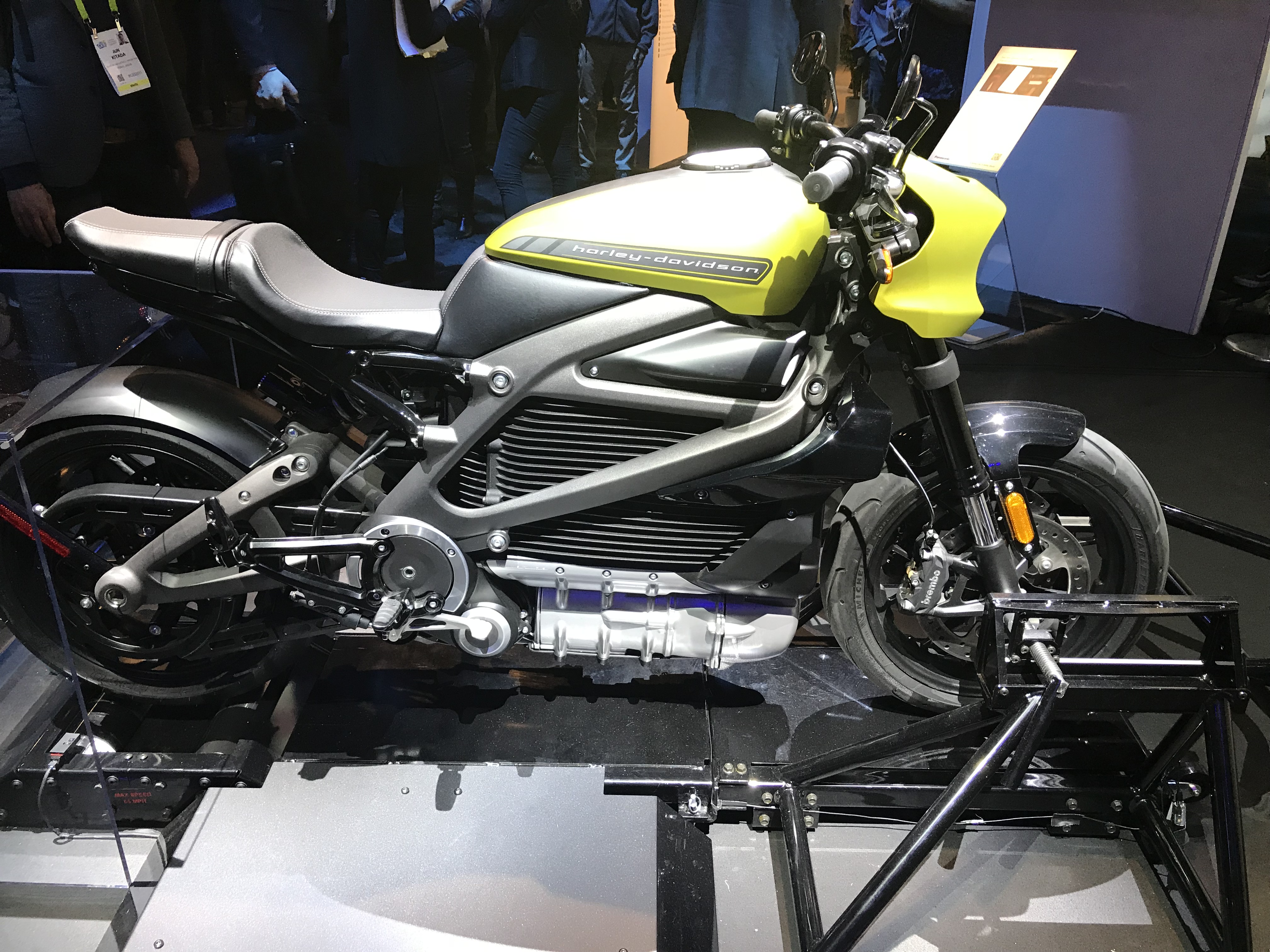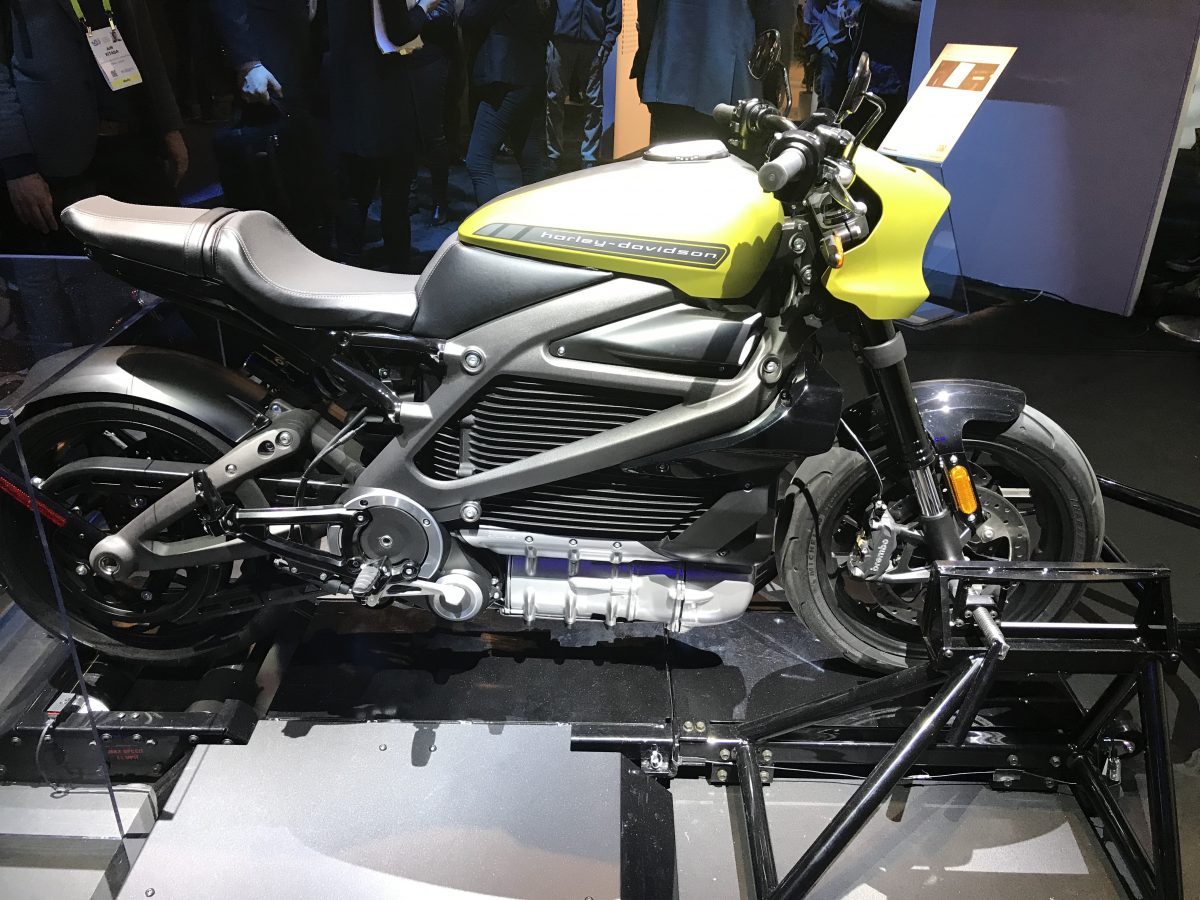
Climbing onto Harley-Davidson’s LiveWire, the company’s first electric motorcycle, feels like you’re getting on any of the company’s other bikes. While it looks different, it feels solid and molds to your body quickly.
But from there, it’s entirely different.
Instead of the loud roar that is so familiar to Harley riders, the LiveWire starts silently. And rather than the rumbling, bone-shaking growl that, for so many people, goes hand in hand with Harley Davidson, the LiveWire has a higher pitched sound as it accelerates.
That’s likely to throw some people off at first. The LiveWire is a very dramatic shift for the company and for riders, but even though it eschews the internal combustion engine, it’s still very much a Harley.
The LiveWire is a big shift for the company. Officials hope the electric bike will boost its flagging retail sales. The company’s U.S. retail sales dropped 13.3% to 36,200 in the third quarter, while its total international sales rose 2.6%.
The motorcycle maker gave Fortune a chance to ride a simulation of its forthcoming electric motorcycle at the CES technology trade show in Las Vegas this week. It was on a stand in the middle of the Las Vegas Convention Center and stationary, and required using augmented reality glasses to demonstrate the bike’s speed, so it was far from a definitive test. But the back wheel of the LiveWire was turning and the speed seemed to be accurately reflected. And, electric or not, this thing seemed like a fast bike.
Harley-Davidson says LiveWire will go from 0 to 60 mph in 3.5 seconds. (We didn’t time it, but it hit that mark fast in our simulated test.) And unlike traditional Harleys, this bike doesn’t require riders to use a clutch or manually shift gears. It also has a lower center of gravity and adjustable suspension. Those qualities, when combined, mean it’s more welcoming to new riders.
And that’s a very intentional design decision, says the company.
“This is really designed to enter into a new segment with new customers, particularly in the urban environment, because this is really built for that,” says Heather Malkenshek, chief marketing officer for Harley Davidson. “We’re trying to bring in the new generation of riders, because this is a very easy bike to ride.”
The LiveWire I rode topped out at 69 mph, but the production model will reach 110 mph. It’s expected to have a range of 110 miles per charge. (That’s notably higher than the initial estimate of 50 miles when Harley-Davidson first started talking about LiveWire in 2014.)
LiveWire will be Harley Davidson’s first electric bike, but it won’t be its last. At CES, the company also introduced two new concept electric two-wheeled vehicles, which Malkenshek says are already in testing and will put into production at a later date. The idea is to build out a large collection of electric two-wheeled vehicles, from full-on motorcycles to scooters to other types of vehicles.
“You still get the raw motion of riding a Harley Davidson, but in an all electric motor,” she says. “And we’re bringing a broad portfolio and I don’t think anyone else is. It’s our intent to lead the category and push the category.”
Harley-Davidson began taking orders on the LiveWire earlier this week. It will reach U.S. dealerships in August with prices starting at $29,799 (which is notably higher than non-electric models, which start at $7,500 to $8,000). It will be available in other countries at a still unannounced future date.
The company has called LiveWire and electric vehicles “the future of Harley-Davidson”.
“We’re at a historic juncture in the evolution of mobility, and Harley-Davidson is at the forefront,” said Matt Levatich, president and CEO of Harley-Davidson. “Innovation that moves the body and soul has always been at the heart of our brand, and this next chapter in our history is about creating products and opportunities for existing and aspiring riders of all ages and walks of life.”
Electric might be the company’s future, but don’t take that to mean it plans to do away with the bikes that made it iconic.
“We fully intend to keep making the internal combustion engine,” says Malkenshek. “I think they’re going to live together for quite some time.”

